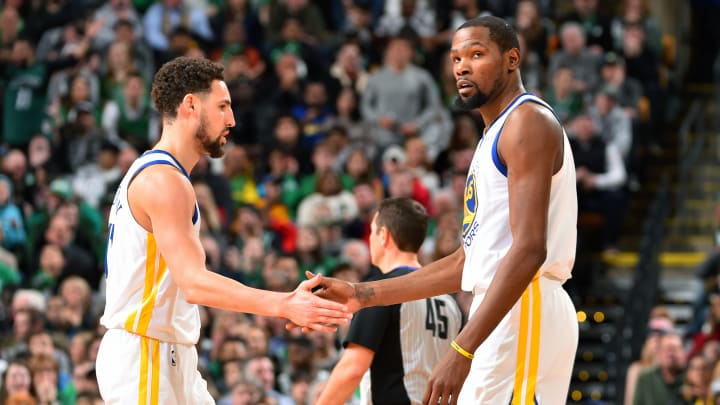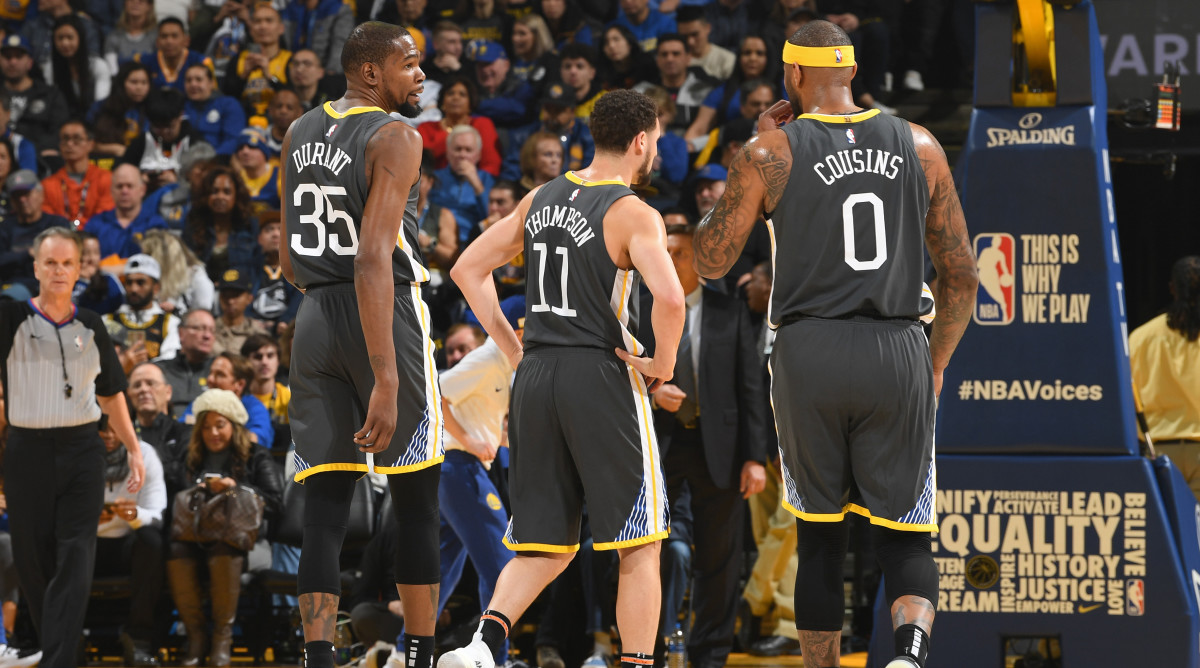The Warriors, NBA Free Agency and What Comes Next

It took the Warriors years to sign Kevin Durant. There were years of planning, making sure that staggered contract commitments aligned for one perfect opportunity. There were years of building, up from the lottery to the title. And, in ways both deliberate and incidental, there were years of pitching—of broadcasting to Durant and to the world that Golden State might be an organization worth considering. Those efforts earned the Warriors two championships in three seasons, but leaves them now subject to factors beyond their control.
Durant is a free agent with the right to do as he likes. If he’s inclined to stay—or to re-sign a five-year max deal for the purpose of being traded at a later date—then he will. If not, the Warriors will be left to resolve a roster with a superstar-shaped void. Maintaining a superteam comes at a practical cost. It leads to a reliance on a cheaper supporting cast, which suggests unproven players that might not pan out or older players of waning effectiveness. Replacements are needed in both cases, but not always feasible under the constraints of NBA rules. Every attempt to sign a qualified player into some marginal salary cap exception is a challenge. Doing it repeatedly, for years on end, while 29 other teams vie for the same group of players is a fundamentally doomed enterprise. The question is not if a superteam’s supporting cast will run its course, but when.

Those problems are only exacerbated if Durant leaves. Superstar salaries are not always a zero-sum proposition. Teams like the Warriors, for example, can lose a player signed to the max (like Durant) and still find themselves well over the salary cap. In fact, Golden State could lose Durant and Klay Thompson (also an unrestricted free agent) and still come nowhere near having enough cap space to sign a max-level player. Renounce every cap hold, move Shaun Livingston’s partially guaranteed salary, dump even the rookie-scale salaries of Damian Jones, Jacob Evans, and newcomer Jordan Poole, it doesn’t matter. Short of losing both of their top free agents and trading one of either Draymond Green or Andre Iguodala—effectively ending the Warriors as we know them—there is no means available to sign another star. There isn’t the kind of well-timed, well-planned window that made Durant a Warrior in the first place.
Supposing that Durant leaves and Klay Thompson re-signs, the greatest spending power Golden State will have at its disposal is the mid-level exception, estimated to be worth just over $9 million. Who the Warriors sign into that slot is of great importance; with Durant presumed gone, Thompson out for months as he rehabs from a torn ACL, and DeMarcus Cousins presumably in line for a much larger deal than Golden State can offer, the reigning Western Conference champions will be desperate for offense. Beyond Stephen Curry, the next-highest-scoring Warrior for opening night is currently slated to be Green, who averaged all of 7.4 points per game in the regular season. Using the mid-level exception is a practical necessity—not only to keep the Warriors playoff viable until Thompson’s return, but to keep Curry from wearing down to the point of altering his career.
What the mid-level exception gets a team like the Warriors very much depends on the market. In 2018, even the smaller taxpayer mid-level exception was enough to entice an injured DeMarcus Cousins. This summer, maybe it lands Rudy Gay or Terrence Ross or Marcus Morris—or perhaps all three command too much. Maybe it could be chunked up into deals for Rodney Hood and Seth Curry. To swing and miss is part of the deal when it comes to cap exceptions of this size. The only way to know what kind of return they might be capable of is to ask around, agent by agent, to gauge where every targeted players’ interests lie. Almost as important as how the Warriors use their mid-level exception is their commitment to using it in full. Golden State could easily be a luxury tax team this season, facing the stiffer penalties of the repeater tax even if they bow out of championship contention. After years of rising payrolls, this might feel like the time for an ebb in salary, an acceptance that with more moderate expectations comes more moderate spending.

Quite the contrary. Spending is the Warriors’ best way forward. If some part of the mid-level exception goes unused, it isn’t deferred to the next season. It’s lost entirely. If Golden State intends to keep Curry, Thompson, and Green moving forward, then they won’t have much in the way of meaningful cap space for the foreseeable future. Make mid-level moves now to improve the roster, because clearing the slate can only get the franchise so far now that Curry himself is making in excess of $40 million a season. Do everything within reason to re-sign Kevon Looney. Use the mid-level to the fullest and most useful extent, tax considerations be damned. The Warriors have huge competitive advantage by way of their market. One of the most profitable franchises in the league is set to unveil a shiny new arena to an affluent season ticket base. Every dollar spent over the tax line will compound under the repeater, but gradual moves made now are the clearest way back to competing at the highest levels.
The Warriors don’t have enough appeal to be competing for minimum salary players with everyone else. What brought good, inexpensive veterans to Oakland in seasons past was the assurance of contention; there was a guarantee, beyond the charismatic style of play and enjoyable work environment, of competing at a certain level. That is gone—at least for next season. Golden State can offer minutes, exposure, touches, and a chance to live in an attractive city. That’s something. But it might not even put the Warriors at the top of the list for veteran minimum types—not with the Lakers alone possibly in the market for 10 such players. It was a charmed era, filling in the tiny gaps around Durant, Curry, Thompson, Green, and Iguodala these past few years. Next comes the difficulty of a more ordinary existence, foregoing what’s lightyears ahead for what’s just down the road.
